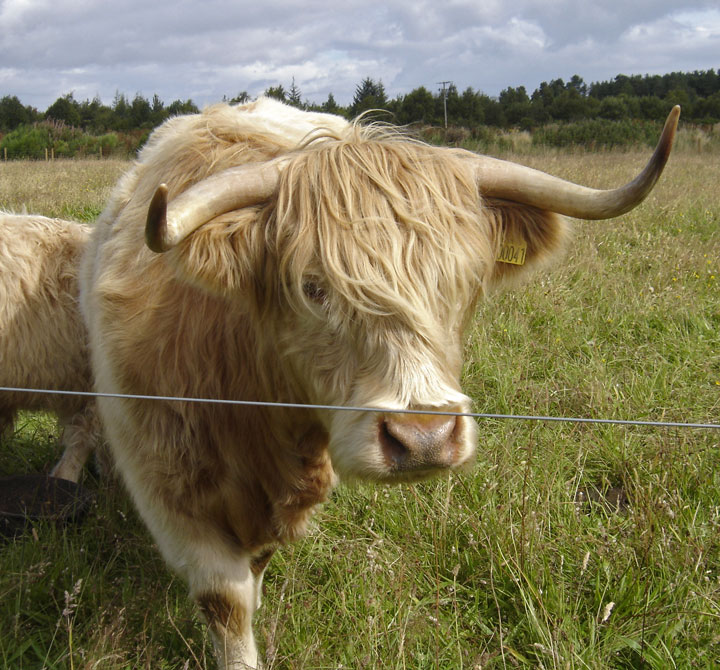

Clava Cairn
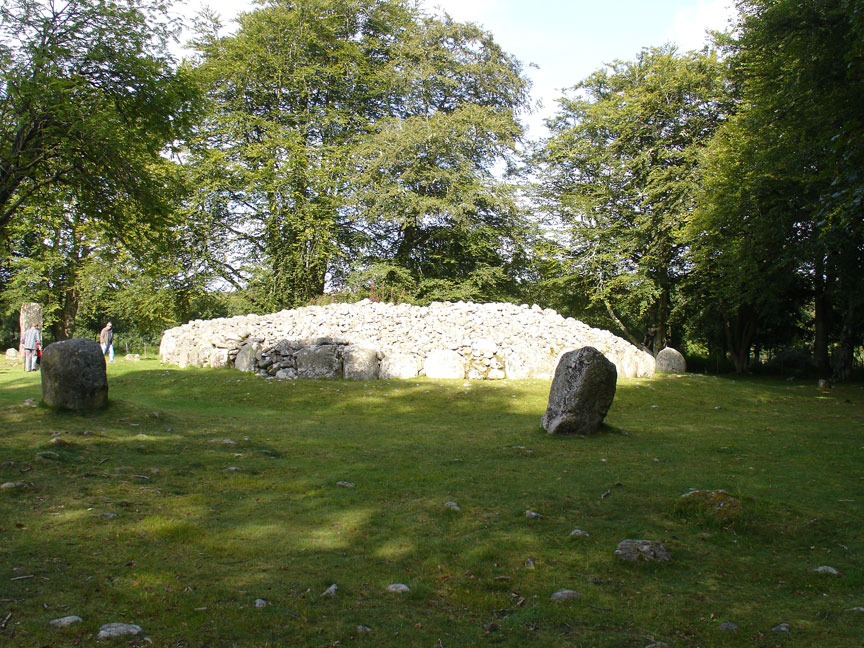
Clava Cairn
The Clava cairn is a type of Bronze Age circular chamber tomb cairn, named after the group of 3 cairns at Balnuaran of Clava, to the east of Inverness in Scotland. There are about 50 cairns of this type in an area round about Inverness. They fall into two sub-types, one typically consisting of a corbelled passage grave with a single burial chamber linked to the entrance by a short passage and covered with a cairn of stones, with the entrances oriented south west towards midwinter sunset. In the other sub-type an annular ring cairn encloses an apparently unroofed area with no formal means of access from the outside. In both sub-types a stone circle surrounds the whole tomb and a kerb often runs around the cairn. The heights of the standing stones vary in height so that the tallest fringe the entrance (oriented south west) and the shortest are directly opposite it.
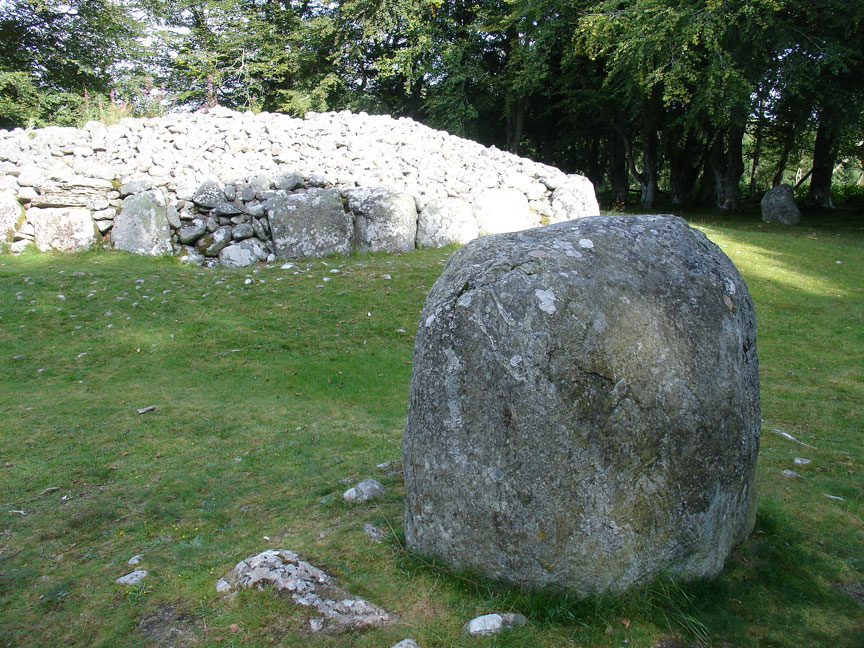
Where Clava-type tombs have still contained burial remains, only one or two
bodies appear to have been buried in each, and the lack of access to the second
sub-type suggests that there was no intention of re-visiting the dead or
communally adding future burials as had been the case with Neolithic cairn
tombs.
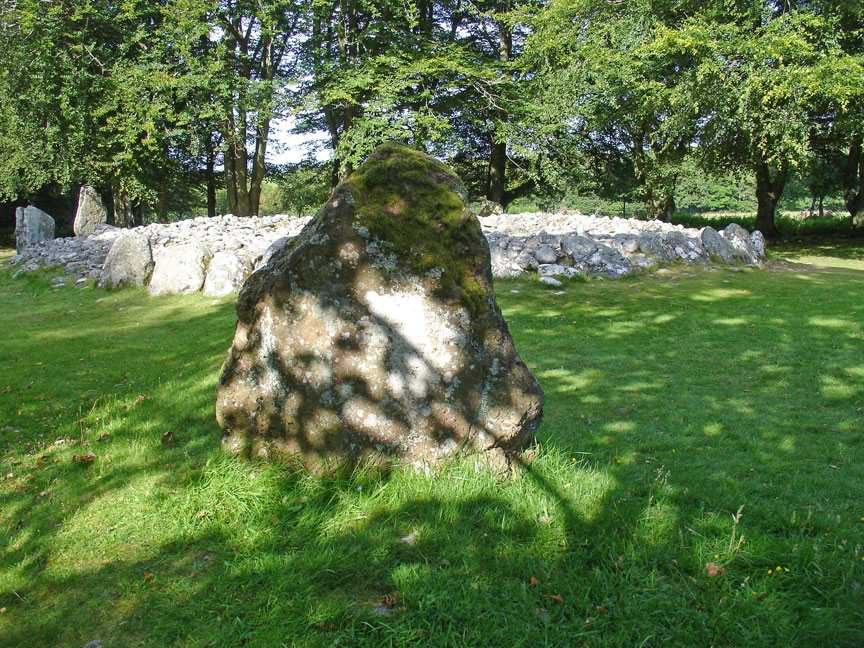
At Balnuaran of Clava itself there is a group of three Bronze Age cairns which
lie close together in a line running north east to south west. The tombs at
either end are of the passage grave sub-type. The central cairn is of the ring
cairn sub-type, and uniquely has stone paths or causeways forming "rays"
radiating out from the platform round the kerbs to three of the standing stones.
The cairns incorporate cup and ring mark stones, carved before they were built
in to the structures. The kerb stones are graded in size and selected for color,
so that the stones are larger and redder to the south west, and smaller and
whiter to the north east. All these elements seem to have been constructed as
one operation and indicate a complex design rather than ad hoc additions.
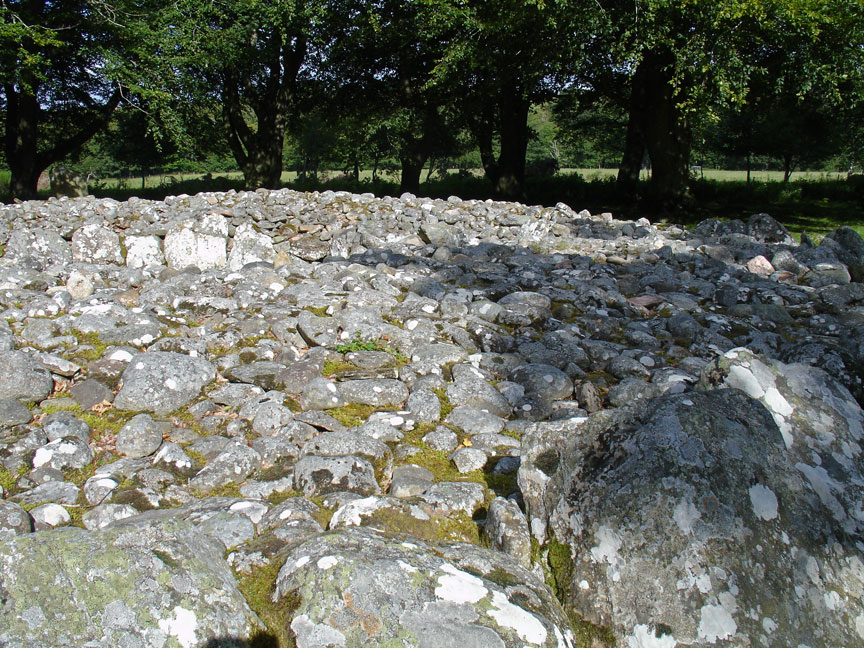
The ring round the northern Balnuaran of Clava cairn was measured and analysed
by Professor Alexander Thom. He found that the ring was slightly egg-shaped with
a complex geometry of circles and ellipses which could be set out around a
central triangle, using sizes which are close to whole multiples of what he
called the Megalithic yard. While the geometry of the shape is generally
accepted, the Megalithic Yard is more controversial.
Text from Wikipedia
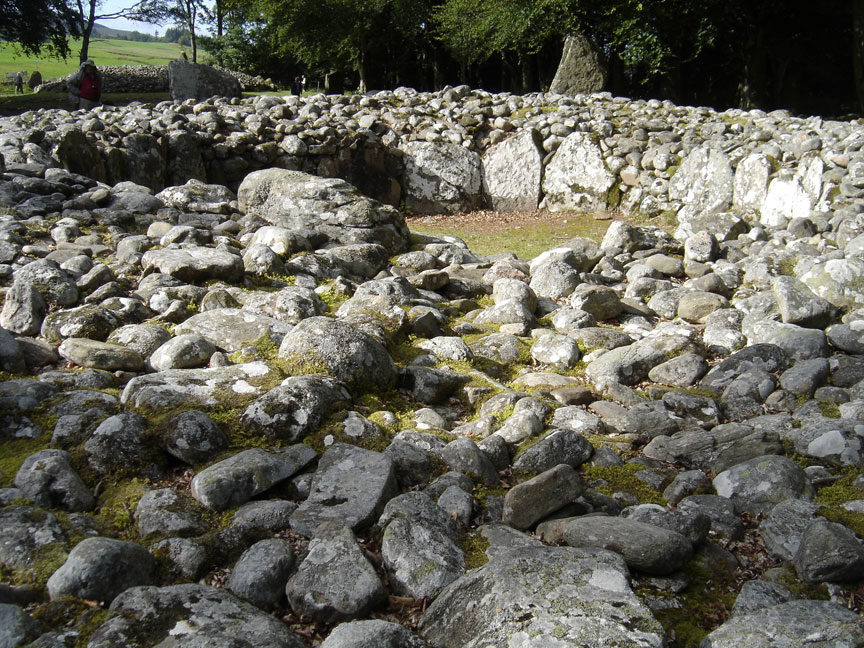

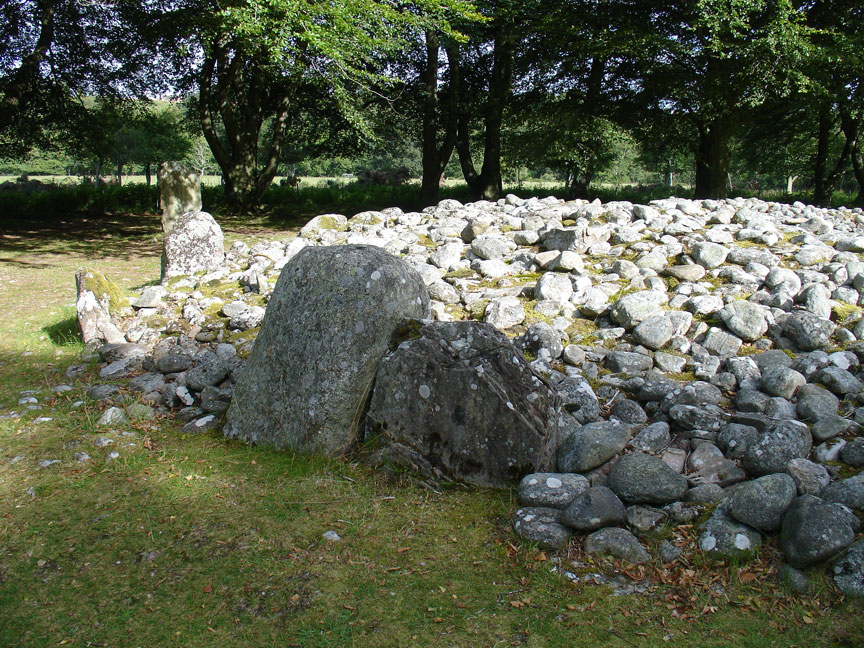
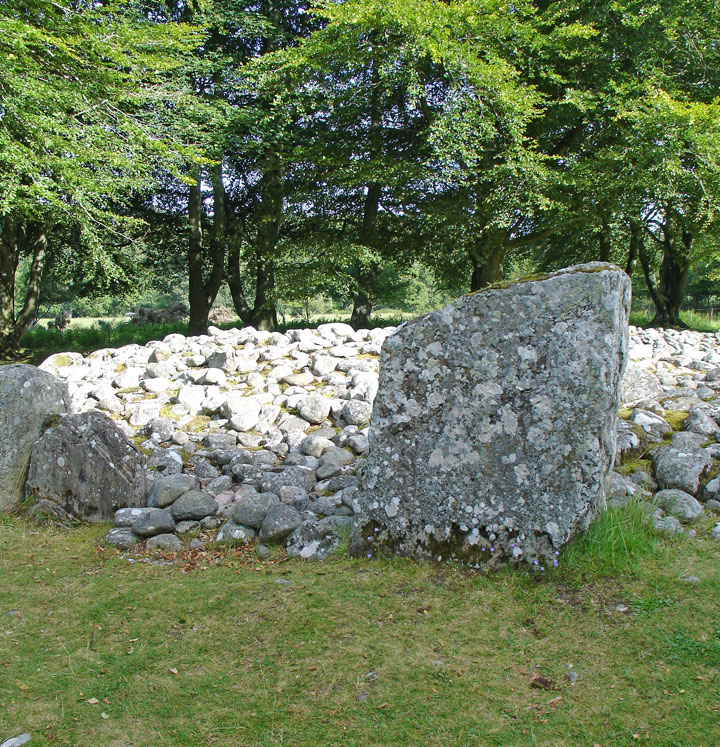
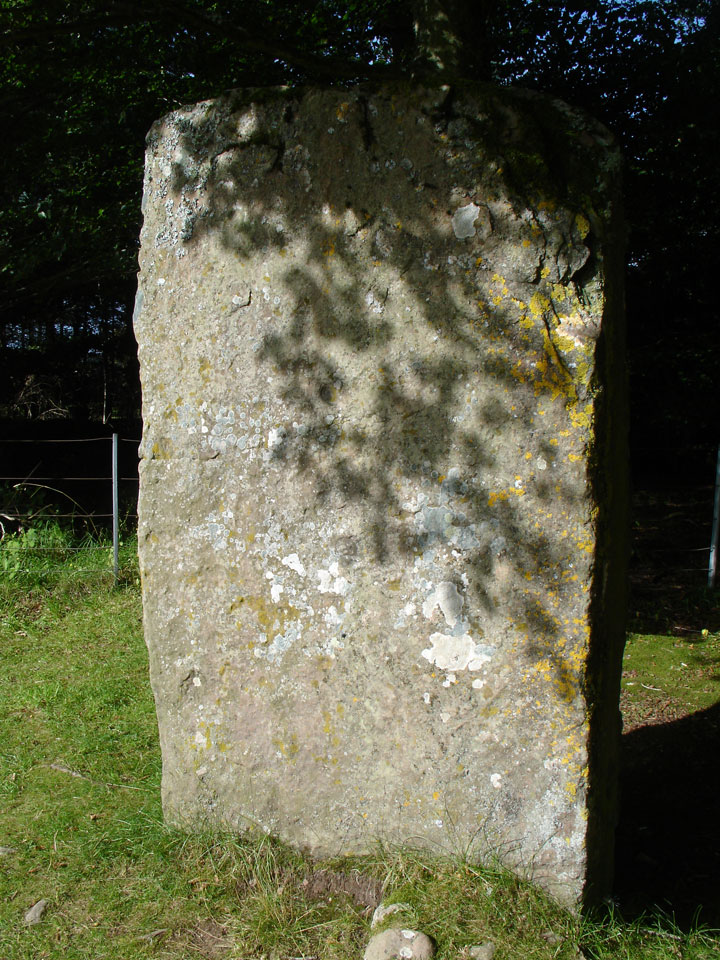

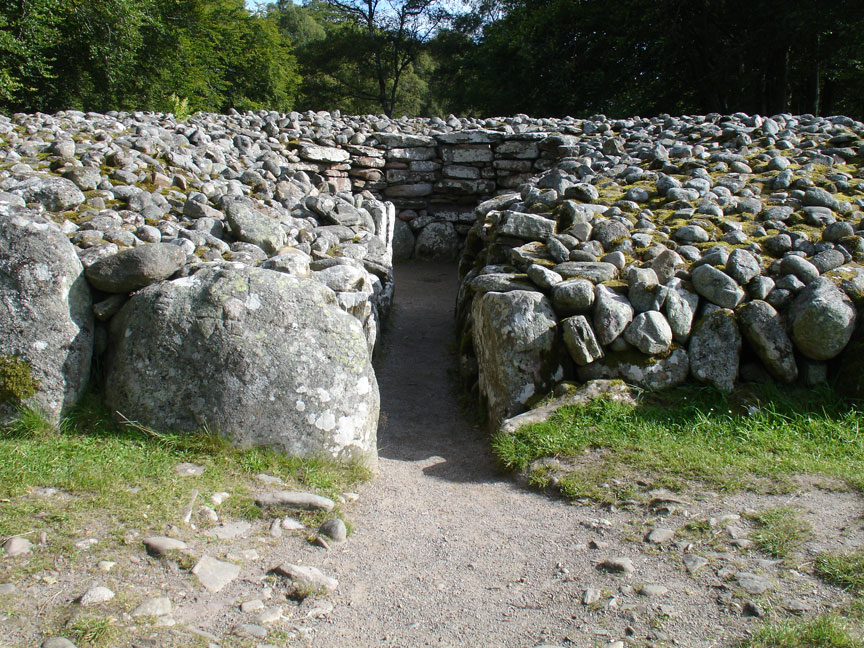



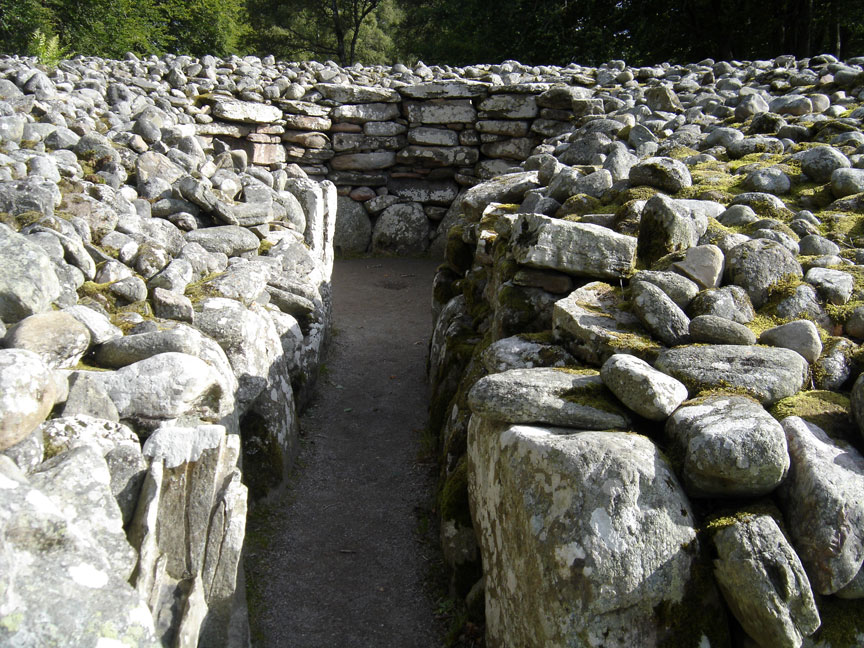
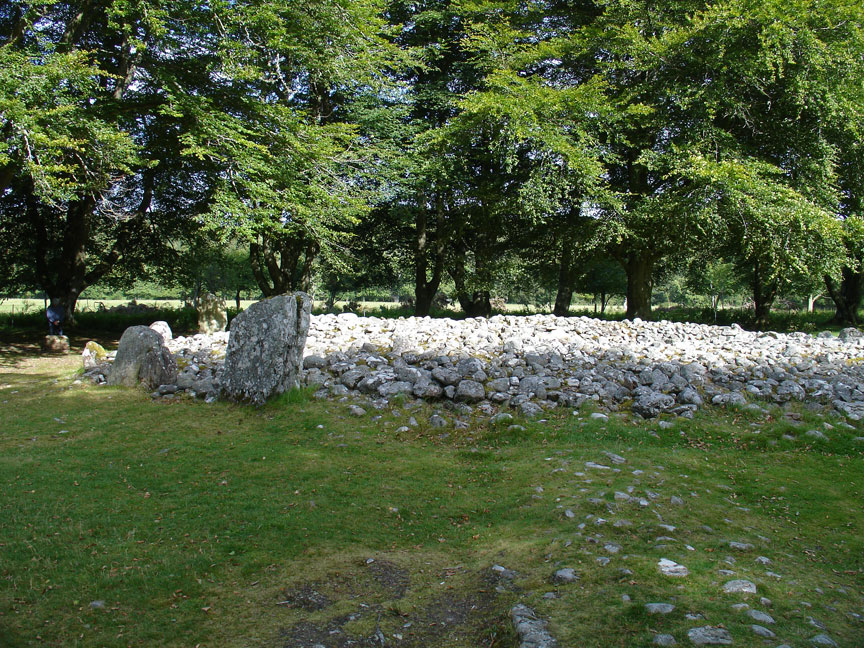

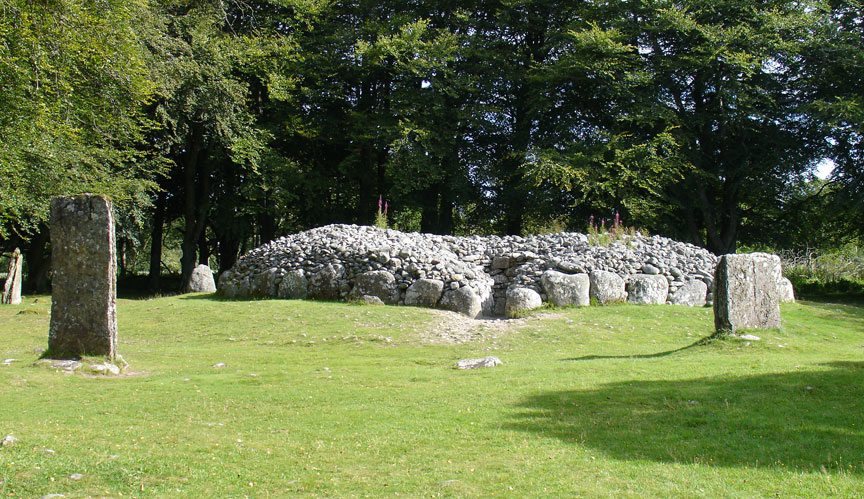

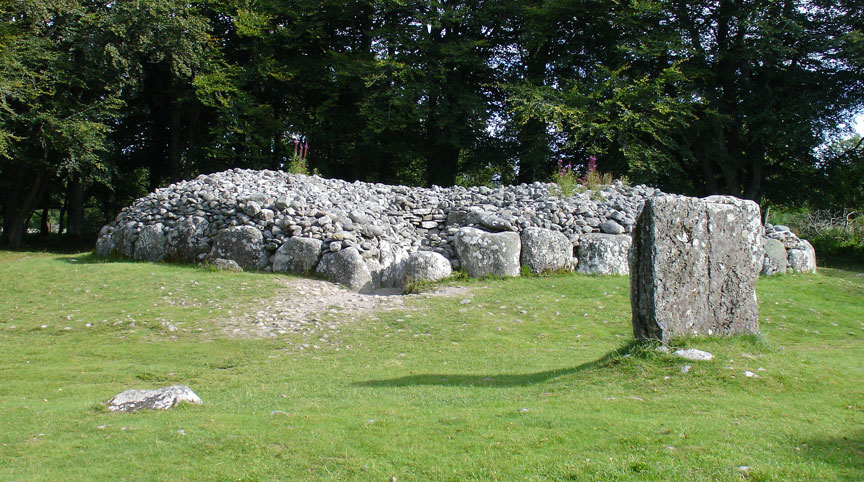
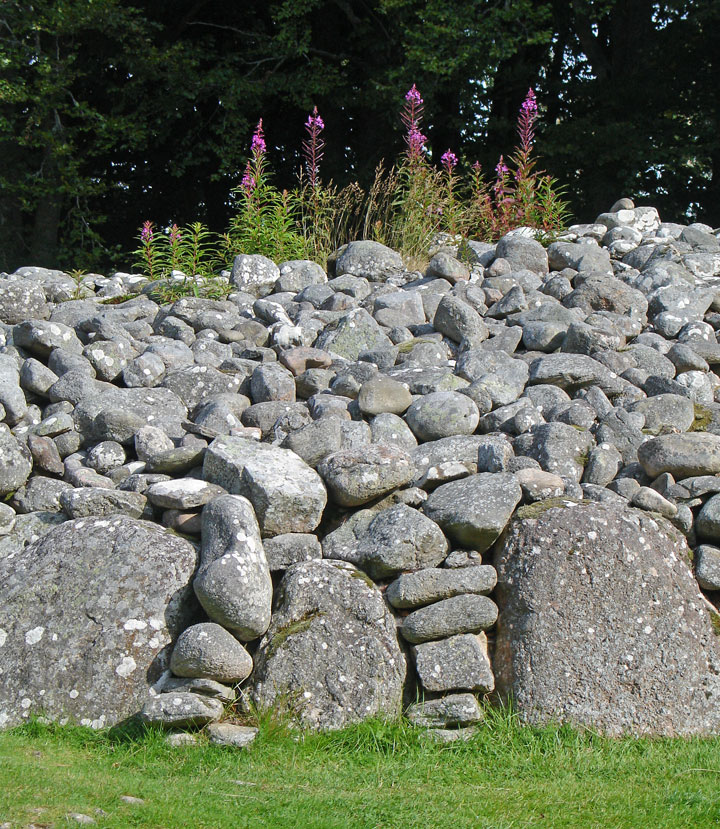
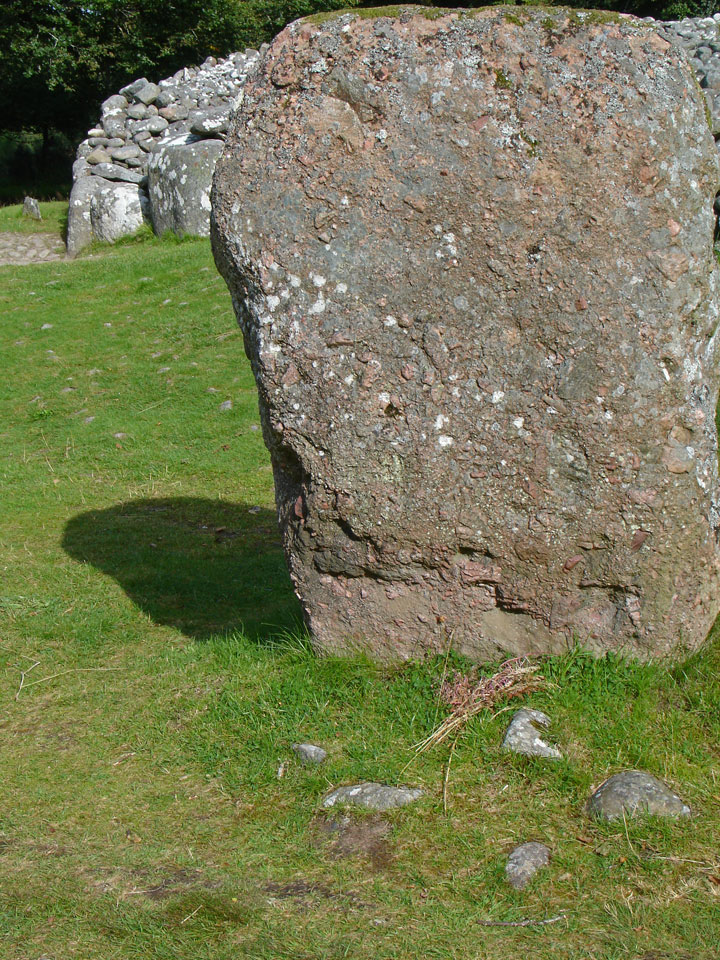
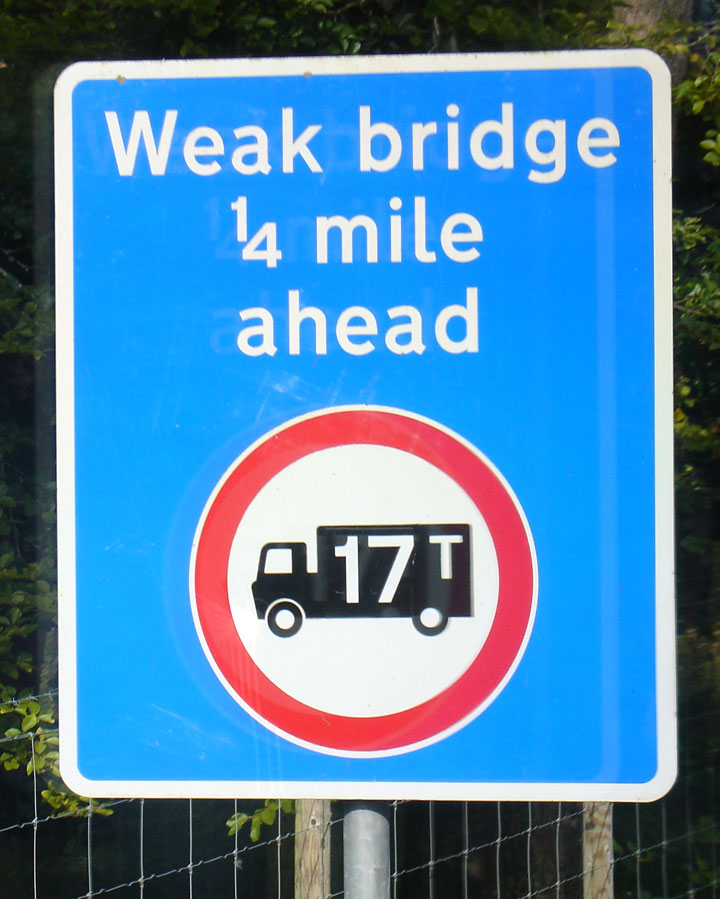
sign I often see before covered wooden bridges in the U.S.
Battle of Culloden
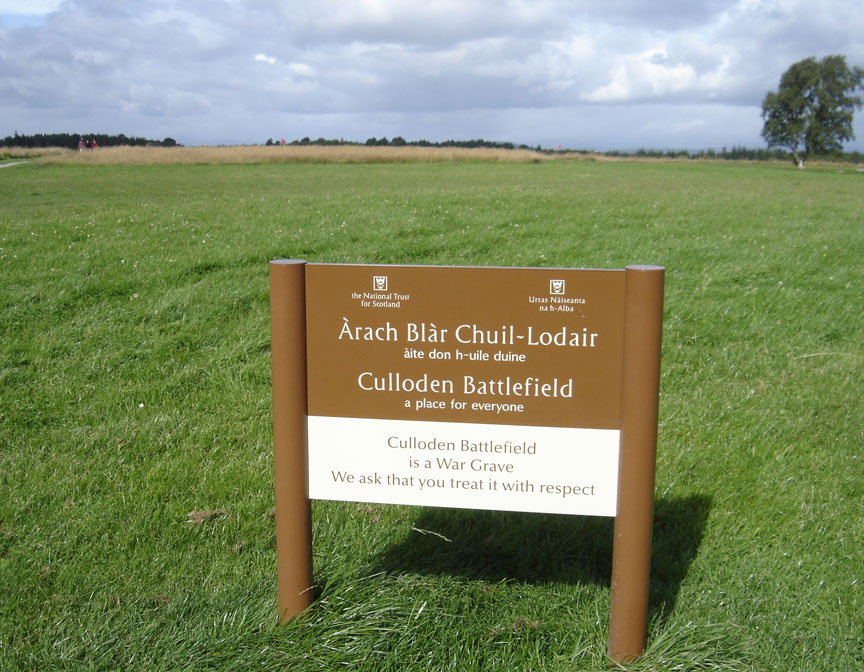
The Battle of Culloden (Scottish Gaelic: BlÓr Ch¨il Lodair) was the final confrontation of the 1745 Jacobite Rising. Taking place on 16 April 1746, the battle pitted the Jacobite forces of Charles Edward Stuart against an army commanded by William Augustus, Duke of Cumberland, loyal to the British government. The Jacobite cause of overthrowing the reigning House of Hanover and restoring the House of Stuart to the British throne was dealt a decisive defeat at Culloden; Charles Stuart never mounted any further attempts to challenge Hanoverian power in Britain. The conflict was the last pitched battle fought on British soil, occurring near Inverness in the Scottish Highlands.

diagram of meeting forces on the battlefield
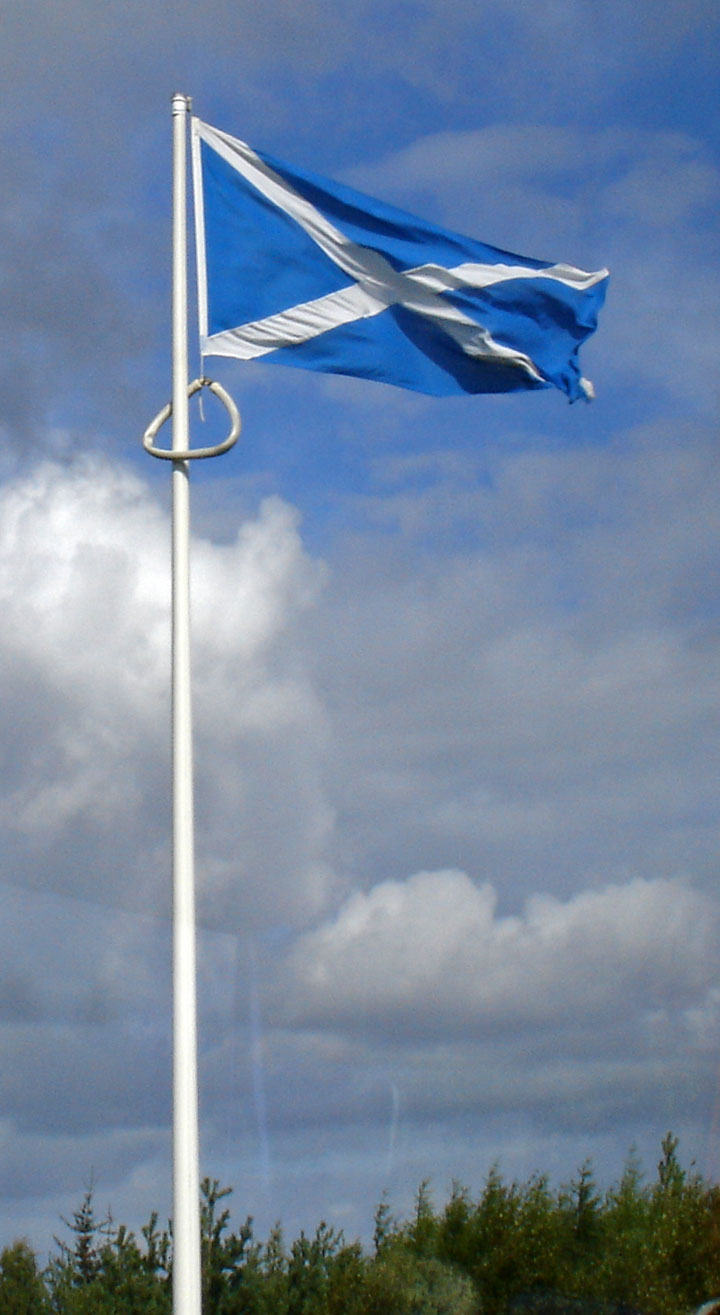
Jacobite banner
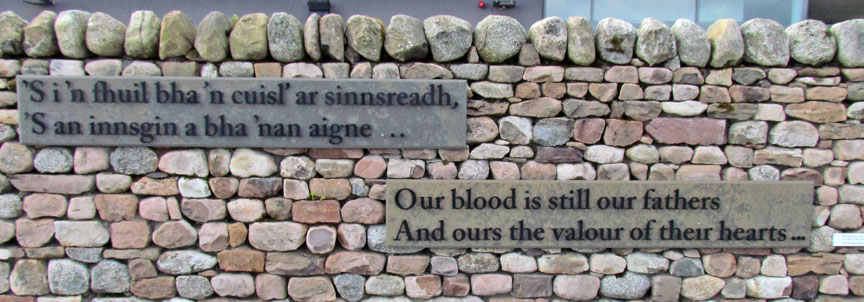

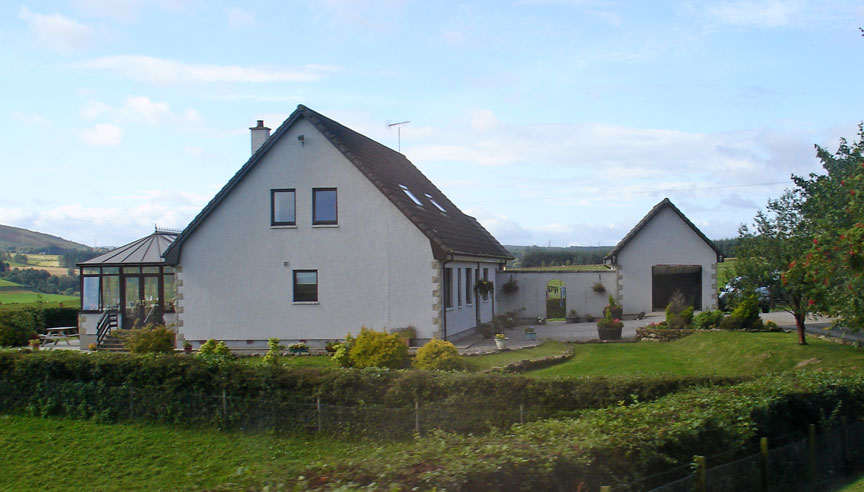
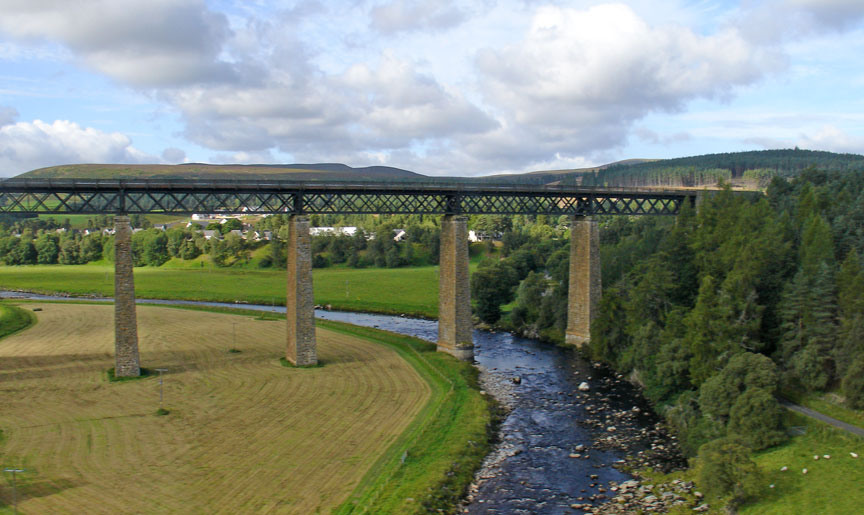
railroad bridge

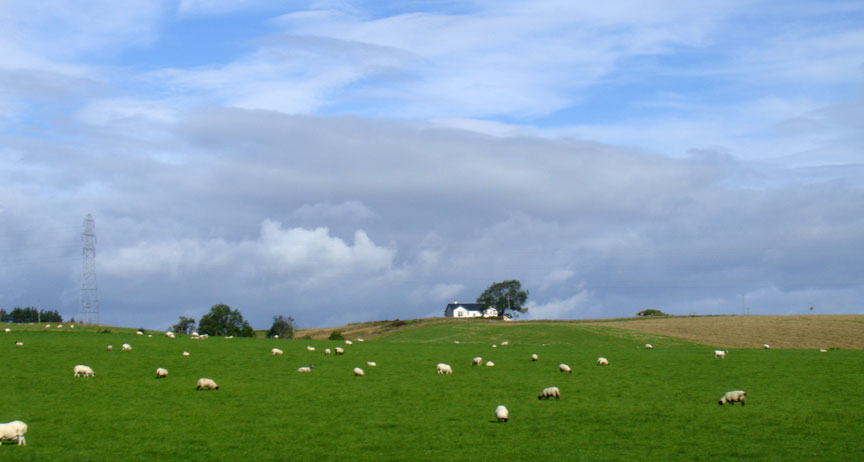
Highland Cattle
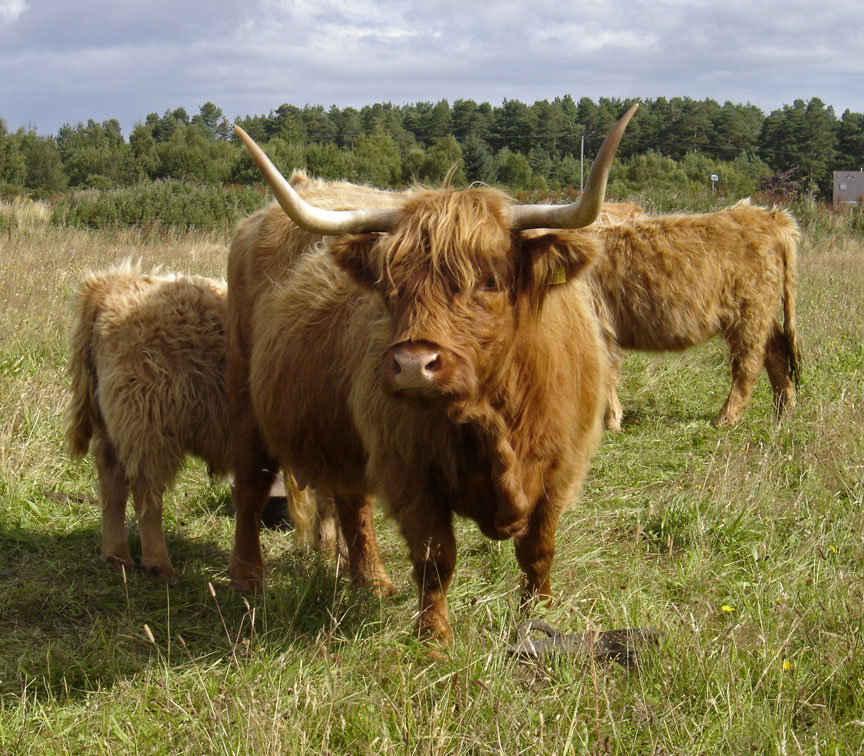
Highland cattle or kyloe are an ancient Scottish breed of beef cattle with long horns and long wavy coats which are colored black, brindled, red, yellow or dun.

The breed developed in the Scottish Highlands and Western Isles of Scotland.
Breeding stock has been exported to the rest of the world, especially Australia
and North America, since the early 20th Century. The breed was developed from
two sets of stock, one originally black, and the other reddish.
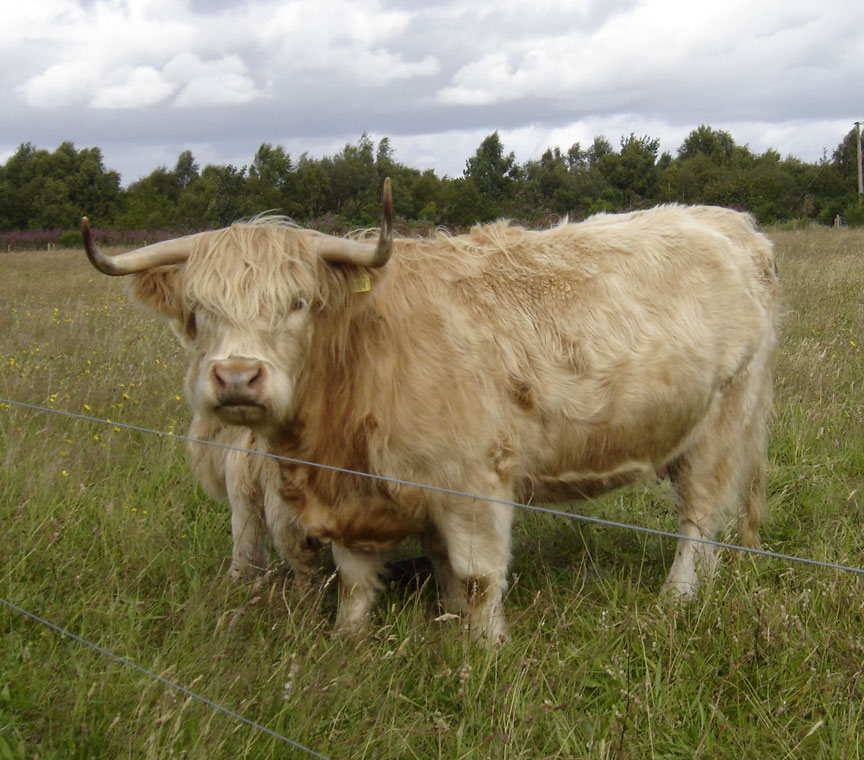
Highlands are known as a hardy breed due to the rugged nature of their native
Scottish Highlands, with high rainfall and strong winds.
